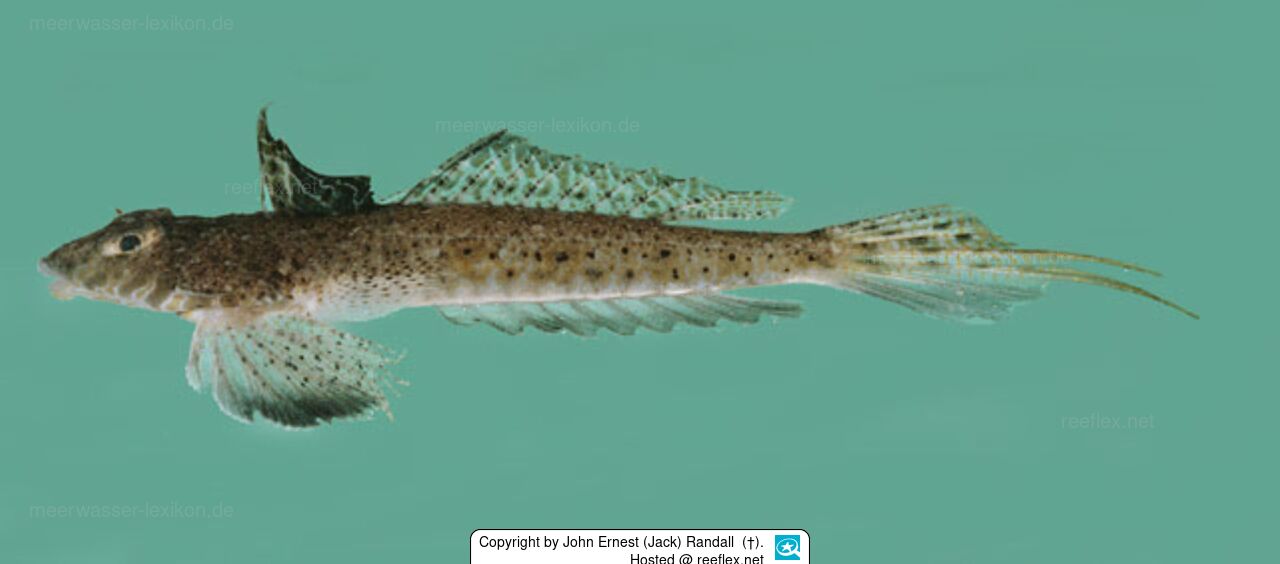Info
Callionymus filamentosus is a lyretail fish that blends in almost perfectly with sandy or gravelly substrates due to its camouflage-like color pattern.
Callionymus filamentosus has a light brown coloration with dark spots on its sides.
The fins have dark brown spots.
Males can be identified by black stripes or spots on the first dorsal fin.
Females can be distinguished by a black spot on the third membrane of the dorsal fin.
A very similar species is Diplogrammus randalli, from which Callionymus filamentosus differs by a black spot in the first dorsal fin.
Synonyms:
Callionymus filentosus Valenciennes, 1837
Repomucenus filamentosus (Valenciennes, 1837)
Callionymus haifae Fowler & Steinitz, 1956
Callionymus stigmapteron Smith, 1963
Calliurichthys filamentosus (Valenciennes, 1837)
Feeding intake.
The fish take a long time to eat at the beginning, before the food is taken up, a close inspection is carried out. After acclimatisation, the offered frozen food is eaten without problems. It should be noted that wild-caught fish behave differently than offspring when it comes to food intake. In the case of offspring, the size of the fish purchased also plays a role in the choice of food.
Callionymus filamentosus has a light brown coloration with dark spots on its sides.
The fins have dark brown spots.
Males can be identified by black stripes or spots on the first dorsal fin.
Females can be distinguished by a black spot on the third membrane of the dorsal fin.
A very similar species is Diplogrammus randalli, from which Callionymus filamentosus differs by a black spot in the first dorsal fin.
Synonyms:
Callionymus filentosus Valenciennes, 1837
Repomucenus filamentosus (Valenciennes, 1837)
Callionymus haifae Fowler & Steinitz, 1956
Callionymus stigmapteron Smith, 1963
Calliurichthys filamentosus (Valenciennes, 1837)
Feeding intake.
The fish take a long time to eat at the beginning, before the food is taken up, a close inspection is carried out. After acclimatisation, the offered frozen food is eaten without problems. It should be noted that wild-caught fish behave differently than offspring when it comes to food intake. In the case of offspring, the size of the fish purchased also plays a role in the choice of food.







 Dr. John Ernest (Jack) Randall (†), Hawaii
Dr. John Ernest (Jack) Randall (†), Hawaii
















